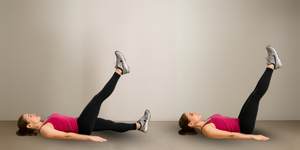Knee pain is one of the most common joint complaints, affecting people of all ages — from athletes to those with sedentary lifestyles. Whether it’s stems from an injury, arthritis, or muscular imbalance, constant knee discomfort can limit mobility and diminish your overall well-being. Often, the solution isn’t just rest; it’s about building strength and stability around the knee joint. Robust muscles act like your body’s natural shock absorbers, offering vital support to ease pain and prevent future injuries.
Well, you don’t need to live with this constant discomfort. Here’s a guide to targeted exercises that can help you improve stability and find pain relief, along with actionable tips to incorporate them into your routine.
Why Targeted Exercises Matter for Your Knees:
Your knee joint relies heavily on the muscles surrounding it – particularly your quadriceps (front of thigh), hamstrings (back of thigh), glutes (buttocks), and even calf muscles. When these muscles are weak, your knees are forced to work harder, leading to increased stress on ligaments, cartilage, and tendons, resulting in pain. Targeted exercises help:
- Improve Stability: Strong muscles hold the knee joint in better alignment.
- Absorb Shock: Muscles cushion the impact on your joints during movement.
- Reduce Pain: By improving mechanics and reducing stress on damaged areas.
- Prevent Future Injuries: A stable knee is less prone to sprains, strains, and other issues.
Top Knee-Friendly Exercises to Try
These exercises are gentle on your joints while effectively building supportive muscle strength.. They’re perfect for beginners or anyone recovering from minor knee discomfort. For optimal results, aim to perform them 3–4 times per week.
Note: Before starting any new exercise, especially if you have existing knee pain, it’s always best to consult with a ortho specialist or physical therapist.
- Wall Squats:
How To Do It: Stand with your back flat against a wall, feet about shoulder-width apart. Gently slide down the wall until your knees form roughly a 45-degree angle (or a shallower angle if more comfortable). Hold this position for 20-30 seconds, then slowly slide back up.
Why It Helps: Strengthens quadriceps and glutes without putting direct pressure on the kneecap.
Actionable Tip: Start with a shallow squat and gradually increase depth as strength improves.

- Glute Bridges
How To Do It: Lie on your back with knees bent and feet flat. Engage your abdominal muscles and glutes, then lift your hips off the floor until your body forms a straight line from your shoulders to your knees. Hold briefly, then slowly lower back down.
Why It Helps: Strengthens glutes and hamstrings, which are vital for hip and knee alignment.
Actionable Tip: Squeeze your glutes at the top of the movement.

- Straight Leg Raises:
How To Do It: Lie on your back with one knee bent and foot flat on the floor. Keep the other leg straight and slowly raise it about 6-12 inches off the floor, keeping your thigh muscles tight. Hold for 3-5 seconds, then slowly lower. Repeat 10-15 times per leg.
Why It Helps: Isolates and strengthens the quadriceps without knee bending.
Actionable Tip: Focus on slow, controlled movements. Avoid lifting too high if it causes back strain.

- Hamstring Curls (Standing or Prone):
How To Do It (Standing): Stand holding onto a chair for support. Slowly bend one knee, bringing your heel towards your glutes.
How To Do It (Prone): Lie on your stomach, bend one knee, bringing your heel towards your glutes.
Why It Helps: Strengthens the hamstrings, crucial for knee stability and balance with the quadriceps.
Actionable Tip: Avoid arching your back. Use an ankle weight for added challenge once comfortable.

- Calf Raises:
How To Do It: Stand with feet hip-width apart. Slowly raise up onto the balls of your feet, holding briefly at the top. Slowly lower down.
Why It Helps: Strong calf muscles support ankle stability, which in turn impacts knee alignment and shock absorption.
Actionable Tip: Do these while brushing your teeth or waiting for coffee.

Final Tips:
- Warm up before exercising with a 5-minute walk or gentle stretches.
- Don’t rush — move with control to avoid aggravating your knees.
- If pain worsens, pause and consult a physiotherapist.
Integrating into Your Routine:
Consistency is key. Aim to perform these exercises 2-3 times a week, allowing a rest day in between. Listen to your body – if any exercise causes sharp or increasing pain, stop right away.
By consistently strengthening the muscles around your knees, you’re not just finding relief today; you’re building a more stable, resilient foundation that will help you stay active and pain-free for years to come. For personalized guidance, consult with a qualified physical therapist or an orthopedic specialist.

